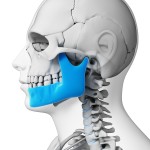
Temporomandibular disorders (TMD) are a group of musculoskeletal and neuromuscular conditions that affect the temporomandibular joint masticatory muscles and associated structures. They are relatively common with a recent review (Dental Elf – 3rd Feb 2021) suggesting a prevalence of 29.3% (95%CI: 6.1–72.3%). Studies have shown that temporomandibular joint (TMJ) arthrocentesis has similar success to arthroscopy.
The aim of this review was to determine whether the surgical procedure of TMJ arthrocentesis is superior to conservative management for reducing pain and improving mouth opening in patients with painful TMD.
Methods
A protocol was registered in the PROSPERO database and Medline searched using PubMed and Ovid interfaces. Randomised controlled trials (RCTs) published in English comparing arthrocentesis and conservative management in TMD patients with pain and reduced mouth opening with a minimum of 6 months follow up were considered. Two reviewers selected studies and assessed risk of bias using the Cochrane Risk of Bias 2 tool (RoB 2). Data was extracted from studies with pain assessed using a visual analogue scale (VAS) and maximum mouth opening (MMO) as the main outcome measures. A random effects meta-analyses was undertaken.
Results
- 7 studies involving a total of 448 patients were included.
- 4 studies were conducted in Turkey and one each in Brazil, Sweden and The Netherlands.
- 2 studies were considered to be at high risk of bias, one at low risk and 4 at moderate risk.
- Meta-analysis
- for the reduction of pain (VAS) suggested a borderline significant superiority for arthrocentesis of − 1.09 cm (95%CI; −2.19 to 0.01 cm) [7 studies].
- for an increase in MMO showed a statistically significant benefit for arthrocentesis of 1.12 mm for arthrocentesis (95%CI; 0.45 to –1.78 mm) [7 studies].
- Subgroup analyses for choice of irrigant solution and volume of irrigant showed no statistically significant differences.
Conclusions
The authors concluded: –
….arthrocentesis is statistically superior to conservative management in the reduction of pain and improvement of jaw opening in patients with a painful closed lock at 6 months after the intervention. However, the marginal differences are unlikely to be clinically relevant, which is in keeping with the observations of previous systematic reviews. Additionally, the confidence interval for pain reduction in this review crosses zero, suggesting the possibility of no superiority. Therefore, from the data obtained in this systematic review, the use of arthrocentesis for painful closed lock would need to be weighed against a patient’s compliance with conservative management.
Comments
The authors have registered their protocol with PROSPERO. However only a single database (Medline) was searched although this was conducted using two different interfaces. The searches were also limited to studies published in English, so it is possible that some relevant studies were excluded. The authors also note that there was marked variations in both the methods of conservative management and the irrigation approaches for arthrocentesis. In view of the limited number and quality of studies included in this review the conclusions are appropriate and additional high quality well conducted and reported studies are needed.
Links
Primary Paper
Thorpe ARDS, Haddad Y, Hsu J. A systematic review and meta-analysis of randomized controlled trials comparing arthrocentesis with conservative management for painful temporomandibular joint disorder. Int J Oral Maxillofac Surg. 2023 Jan 31: S0901-5027(22)00488-X. doi: 10.1016/j.ijom.2022.12.005. Epub ahead of print. PMID: 36732095.
Other references
Dental Elf – 3rd Feb 2021
Dental Elf – Arthrocentesis blogs
